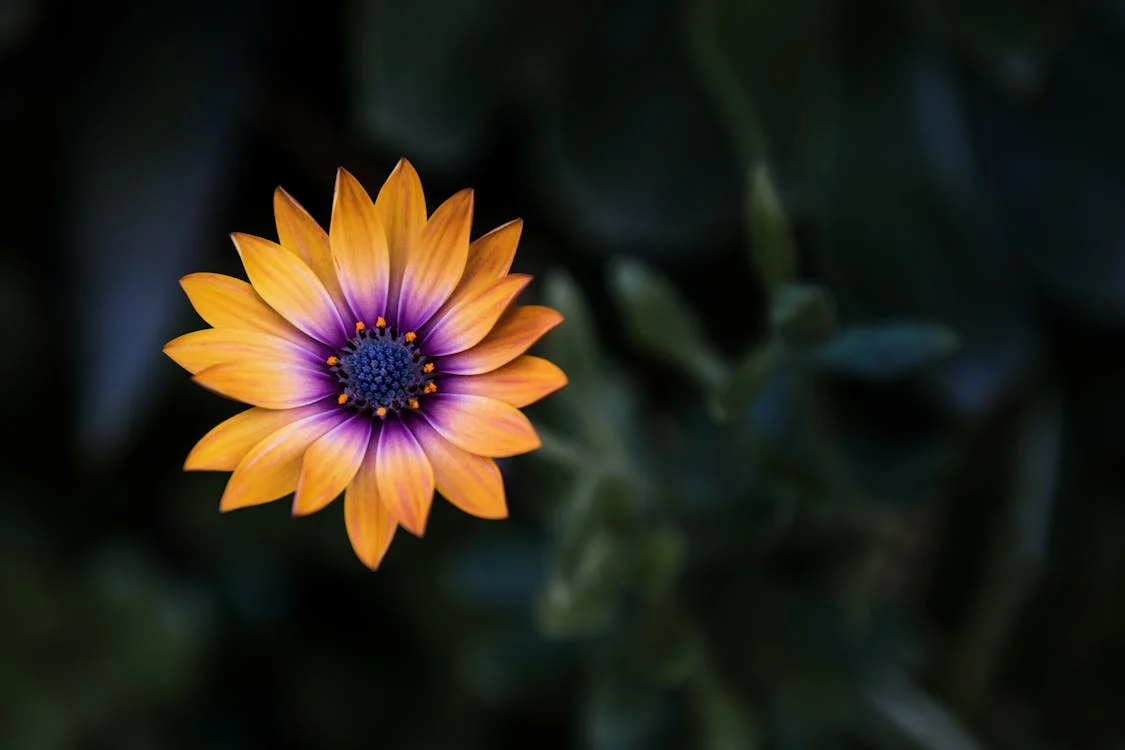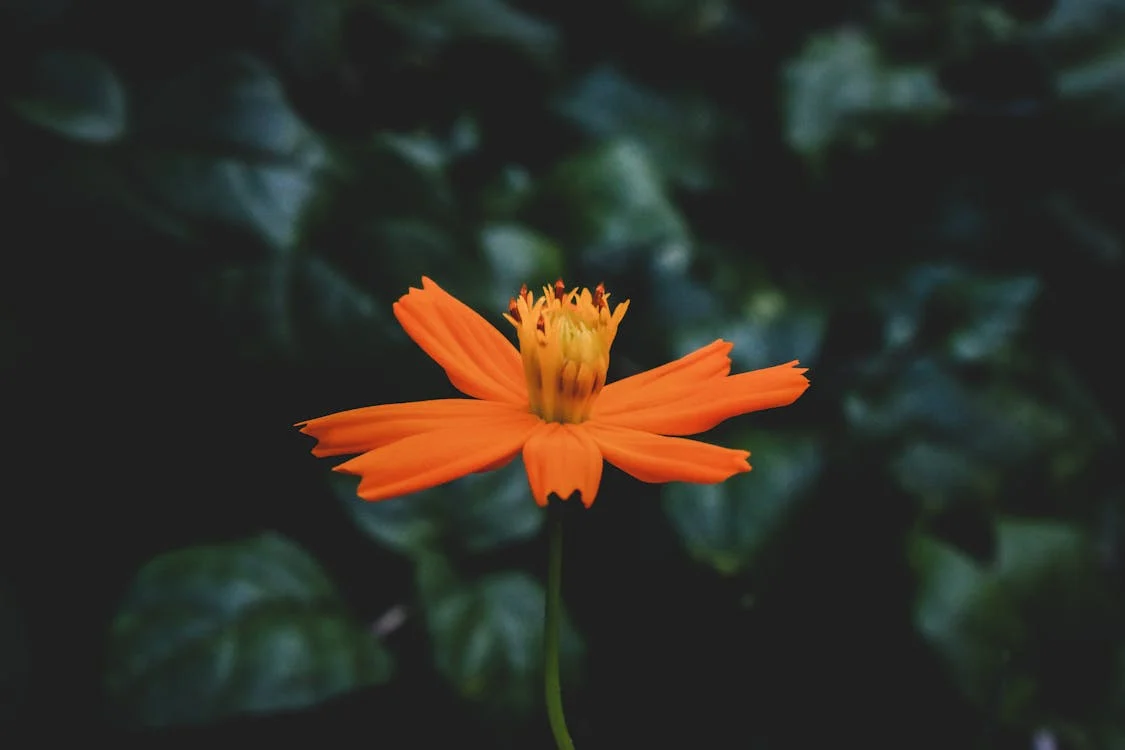One thing remains true despite changes in the symbolism attached to hues and flowers over time: orange elicits a response. Orange always makes a statement; it can be symbolic, regal, cautionary, or all three at once. The same holds true with orange blooms.
The meaning and symbolism of orange flowers are explained in the following paragraphs so that you can use them to communicate with the people you care about. Orange is a vibrant color with a rich history.
The symbolism and connotations associated with orange flowers include health and well-being, vigor, excitement, balance, joy, and pleasure, among other things. We’ll look at the symbolism, significance, and appropriate occasions for giving orange flowers in this post.

List of flowers that are orange in color
I thought you’d be interested in viewing a list of some of the types of flowers that come in orange or primarily orange hues before we go into more detail on the symbolic meaning of orange flowers. There are numerous options. Below are a few:
- Bird of Paradise
- Calendula
- Carnation
- Chrysanthemum
- Clematis
- Cosmos
- Daffodil
- Dahlia
- Geranium
- Marigold
- Nasturtium
- Orange lily and tiger lily
- Orange rose
- Orchid
- Peony
- Poppy
- Tulip
- Zinnia
Orchid Flowers: Meaning & Symbolism Exposed.
Essentials of the meaning of Orange flowers
In different cultures and eras, the color orange has a variety of connotations. Orange flowers may represent joy, happiness, optimism, passion, vigor, and enthusiasm. An orange rose represented attraction and yearning to the Victorians, while an orange lily connoted harsh disapproval. Orange always denotes strong feelings and conveys a vibrant message.

Significance of the color orange
Orange has long been connected to powerful emotions of one kind or another in human history. The hue has a lengthy and fascinating history; it is the only color to have its own name. It is one of the few English terms that can be used on its own (tangerine is not the same thing). The common citrus fruit is where the word “orange” originates from and gets its name.
One of the first colors used by humans to make art has a history that spans millennia, and it is orange. Both the ancient Chinese and Egyptians produced orange pigment for tomb decorating using the (very deadly) mineral realgar. The mineral orpiment was utilized by the ancient Romans to create orange coloring. The golden-yellow color can be seen in illuminated medieval manuscripts.
Historical Europe and the significance of the color Orange
The hue was frequently connected to fertility and abundance in ancient Europe. This may be due to the fact that a lot of fruits, vegetables, and leaves turn orange when they ripen. Paintings of the harvest goddess Pomona sometimes have her donning orange robes because of this meaning. Additionally, Thanksgiving is a holiday that is heavily decorated in orange in the US and centers around a bounty of food.
However, until oranges were introduced from the East in the 1500s, the color didn’t even have a name in Europe. In numerous European languages, the color got its name from the fruit.
Of course, orange has been effectively used by painters throughout history. Fans of the color included Van Gogh, Toulous-Lautrec, and Monet, who frequently utilized it to great advantage in his sunset paintings.
Spirituality and the color Orange
However, the meaning of orange varies between cultures. Orange has a mystical significance in many Asian cultures. Numerous Buddhist monks don orange robes, which to Hindus are symbolic of divinity, fire, and purifying chastity.
It goes without saying that the hue is eye-catching and grabs eyeballs and is frequently used to indicate caution or safety. Orange is a popular hue for safety equipment (like traffic cones) in many cultures. Due to its tendency to stand out, it is frequently utilized in prison uniforms in the United States.
Orange and Various Seasons
Orange is often linked to specific times of the year as well. In the United States, orange is closely associated with fall. Orange mums, pumpkins, and autumnal leaves are all well-known seasonal icons.
Strong sensations and emotions are also evoked by orange blossoms. Regardless of one’s religion or cultural upbringing, the hue is strong and has a strong metaphorical impact. Learn more about orange flowers by reading on.
More on orange flowers
Orange flowers aren’t the most prevalent in the world of flowers; that distinction is probably held by green, brown, white, yellow, and pink blooms. There isn’t a comprehensive database that lists every flower that exists, though.
All around the world, in both tropical and temperate regions, orange flowers can be found. More than 735 plant species that bloom in orange-hued hues can be found at the University of Texas in Austin’s Lady Bird Johnson Wildflower Center.
However, there are roughly 60 species of orange blossoms that stand out when it comes to the orange flowers that are frequently grown in gardens and utilized in flower stores.

What is the science behind orange flowers?
How does a plant get orange blossoms, exactly? All depends on the pigments. Anthocyanins, carotenoids, and betalains are three distinct chemical kinds that are present in varying amounts in plant pigments. The colors we perceive when we gaze at flowers are influenced by these substances as well as other elements like soil acidity and cell shape.
Anthocyanins, for instance, are a class of flavonoid compounds that produce hues ranging from orange, red, and blue. There are more than 300 anthocyanins found in nature. While to humans they appear colorless, they absorb light in a way that makes them visible to insects, which helps to draw pollinators.
Orange tones are also brought on by terpenoids known as carotenoids. These pigments, often known as carotenes, are what give many flowers and carrots their distinctive orange hue. Although less prevalent, the third form of pigment, called betalains, is nevertheless present in some flowers.
Rose Flower Meanings, Symbolism, Mythology.
Significance of Orange Flowers in Greece and Ancient Egypt
Orange was a significant part of many ancient societies and ceremonies. The hue was employed in ancient Egypt to adorn tombs and pay tribute to the deceased. Saffron was used to color textiles while minerals were employed to create paintable colors.
The orange, red, and yellow petals of safflowers (Carthamus tinctorius) were frequently used to produce vibrant dyes. Safflower dye was reportedly employed in the 12th century to color mummification shrouds, according to historical data. Safflower garlands have been discovered within pharaohs’ tombs and wrapped around mummies, notably that of Pharaoh Tutankhamen, whose tomb is the most well-known of them.
However, the flowers were more significant to these ancient peoples than just a source of dye. There have been some shrouds discovered with safflowers sewn on them. Safflower oil from the plants was used as a remedy for insect bites and stings, and safflower seeds have been discovered as temple offerings.
Additionally, orange has a crazy quality to it. Orange flowers might therefore be the ideal gift for a loving partner, acquaintance, or other family member who is more unconventional. Of course, they can also add some life to a garden that might otherwise be dull.
In conclusion, many people get powerful emotions when they see orange blossoms. In order to surround yourself with brilliant beauty, you have a number of flower options to select from if you have loved ones who appreciate the distinctive features of the color orange or if you yourself are one among them.

